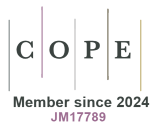Patterns of prescription, hospitalizations and costs of herpes zoster in patients at risk, from a large Italian claims database
DOI:
https://doi.org/10.33393/grhta.2020.2026Keywords:
Big data, Healthcare costs, Herpes zoster virus, Public health practice, Zoster vaccineAbstract
Purpose: This observational study aimed to investigate the incidence of herpes zoster (HZ) among at-risk subjects aged ≥50 years, characterize them and assess annual healthcare utilization and costs from the Italian National Health System (NHS) perspective.
Methods: Records of reimbursed drug prescriptions, hospitalizations and outpatient specialist care from the Fondazione ReS database were linked to identify patients aged ≥50 years at HZ risk (i.e. cardiovascular disease/chronic obstructive pulmonary disease/diabetes/immunosuppression, according to the Italian National Vaccine Prevention Plan – PNPV 2017-2019) in 2013. New HZ events (incidence per 1,000) were researched in 2 years, and subjects with HZ in the previous year were excluded. Antiviral and pain therapy consumptions, hospitalizations for HZ and costs paid by NHS were assessed annually.
Results: From 12,562,609 inhabitants in 2013, a total of 1,004,705 patients (18.5% aged ≥50 years) at risk without a previous event were selected. The 2-year incidence of HZ was 5.9 per 1,000 (mean age 74 ± 10 years; 54.3% female). Patients aged 80-89 (7.2 per 1,000), females (6.7 per 1,000) and immunosuppressed subjects (6.9 per 1,000) had the highest incidence rates. One year after the new HZ episode, 82.2% were treated with specific antivirals (79.3% brivudine), generating an annual average cost/treated of €106; 8.0% were hospitalized for HZ, with an average cost/hospitalized of €3,927; the overall mean cost/incident patient was €402.
Conclusions: This analysis provided HZ incidence in subjects aged ≥50 years considered at risk by the PNPV and its burden from the NHS perspective. Our findings can help health governance to improve clinical decisions and economic positioning concerning zoster vaccine plan.
References
- Pinchinat S, Cebrian-Cuenca AM, Bricout H, Johnson RW. Similar herpes zoster incidence across Europe: results from a systematic literature review. BMC Infect Dis. 2013;13:170.
- Johnson RW, Alvarez-Pasquin MJ, Bijl M, et al. Herpes zoster epidemiology, management, and disease and economic burden in Europe: a multidisciplinary perspective. Ther Adv Vaccines. 2015;3(4):109-120.
- Kawai K, Yawn BP. Risk factors for herpes zoster: a systematic review and meta-analysis. Mayo Clin Proc. 2017;92(12):1806-1821.
- Italian Ministry of Health. Piano Nazionale Prevenzione Vaccinale (PNPV) [Italian National Vaccine Prevention Plan] 2017-2019. Italy 2017; 90.
- Lai SW, Lin CL, Liao KF. Real-world database investigating the association between diabetes mellitus and herpes zoster in Taiwan. Medicine (Baltimore). 2019;98(18):e15463.
- Yanni EA, Ferreira G, Guennec M, et al. Burden of herpes zoster in 16 selected immunocompromised populations in England: a cohort study in the Clinical Practice Research Datalink 2000-2012. BMJ Open. 2018;8(6):e020528.
- Johnson RW, Rice AS. Clinical practice. Postherpetic neuralgia. N Engl J Med. 2014;371(16):1526-1533.
- Kang JH, Ho JD, Chen YH, Lin HC. Increased risk of stroke after a herpes zoster attack: a population-based follow-up study. Stroke. 2009;40(11):3443-3448.
- Gelb LD. Preventing herpes zoster through vaccination. Ophthalmology. 2008;115(2 Suppl):S35-S38.
- Calabria S, Forcesi E, Dondi L, Pedrini A, Maggioni AP, Martini N. Target population of non-deferrable surgery and uncontrolled severe bleeding related to dabigatran. Cardiovasc Drugs Ther. 2018;32(3):281-286.
- Cimminiello C, Dondi L, Pedrini A, et al. Patterns of treatment with antiplatelet therapy after an acute coronary syndrome: data from a large database in a community setting. Eur J Prev Cardiol. 2018:2047487318814970.
- Piccinni C, Ronconi G, Calabria S, et al. Healthcare resources utilisation in primary progressive multiple sclerosis. Neurol Sci. 2018;39(7):1169-1174.
- Italian Ministry of Work Health and Welfare. Italian version of the International Classification of Diseases – 9th revision – Clinical Modification. 2007.
- Panatto D, Bragazzi NL, Rizzitelli E, et al. Evaluation of the economic burden of Herpes Zoster (HZ) infection. Hum Vaccin Immunother. 2015;11(1):245-262.
- Kawai K, Gebremeskel BG, Acosta CJ. Systematic review of incidence and complications of herpes zoster: towards a global perspective. BMJ Open. 2014;4(6):e004833.
- Gialloreti LE, Merito M, Pezzotti P, et al. Epidemiology and economic burden of herpes zoster and post-herpetic neuralgia in Italy: a retrospective, population-based study. BMC Infect Dis. 2010;10:230.
- Agenzia IdF. Nota 84. https://www.aifa.gov.it/nota-84.
- Chiyaka ET, Nghiem VT, Zhang L, Deshpande A, Mullen PD, Le P. Cost-effectiveness of herpes zoster vaccination: a systematic review. Pharmacoeconomics. 2019;37(2):169-200.
- Werner RN, Nikkels AF, Marinovic B, et al. European consensus-based (S2k) guideline on the management of herpes zoster – guided by the European Dermatology Forum (EDF) in cooperation with the European Academy of Dermatology and Venereology (EADV), Part 2: treatment. J Eur Acad Dermatol Venereol. 2017;31(1):20-29.
- Agenzia IdF. L’uso dei farmaci in Italia. Rapporto Nazionale Anno 2018 [The use of drugs in Italy. National Report Year 2018]. 2018.
- Malone DC, Brown M, Hurwitz JT, Peters L, Graff JS. Real-world evidence: useful in the real world of US payer decision making? How? When? And what studies? Value Health. 2018;21(3):326-333.
- Jackson LA, Reynolds MA, Harpaz R. Hospitalizations to treat herpes zoster in older adults: causes and validated rates. Clin Infect Dis. 2008;47(6):754-759.
- Tseng HF, Sy LS. Use of real-world evidence to evaluate the effectiveness of herpes zoster vaccine. J Infect Dis. 2018; 218(suppl_2):S63-S67.
- Amirthalingam G, Andrews N, Keel P, et al. Evaluation of the effect of the herpes zoster vaccination programme 3 years after its introduction in England: a population-based study. Lancet Public Health. 2018;3(2):e82-e90.










